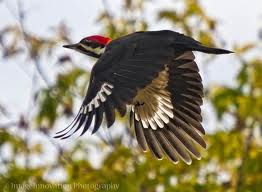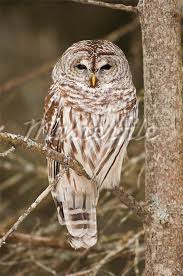 An unusual and even comical species of animal called Hominus Ornithologicus gathers each spring and fall in Ontario’s Presqu’ile Provincial Park, situated on the eastern part of Lake Ontario about 155 km east of Toronto. Specimens of this breed are easily distinguished by their binoculars, sketchbooks, cameras with telescopic lenses, and well-thumbed editions of Peterson’s Field Guides to the Birds.
An unusual and even comical species of animal called Hominus Ornithologicus gathers each spring and fall in Ontario’s Presqu’ile Provincial Park, situated on the eastern part of Lake Ontario about 155 km east of Toronto. Specimens of this breed are easily distinguished by their binoculars, sketchbooks, cameras with telescopic lenses, and well-thumbed editions of Peterson’s Field Guides to the Birds.
And why shouldn’t birdwatchers flock to Presqu’ile? The birds certainly do. About 125 species of bird nest here, and at least 310 feathered species pass through each season enroute to exotic destinations like South America, Europe, Asia, and the Arctic. Presqu’ile is also an instinctual gathering point for Monarch butterflies as they begin their annual migratory trek to Mexico each autumn.
 Presqu’ile — from the French for “almost an island” — is a boomerang-shaped spit of sand and limestone that juts sharply into the lake. Geologists call the land formation a “tombolo” and say it was formed by retreating glaciers some 12,000 years ago. Richly varied, the park’s natural landscape features sand dunes, sand and pebbled beaches, limestone outcroppings, forests, gull-inhabited islands, reedy marshes and “pannes” — waterlogged meadows carpeted with wildflowers that burst into colorful bloom in late July.
Presqu’ile — from the French for “almost an island” — is a boomerang-shaped spit of sand and limestone that juts sharply into the lake. Geologists call the land formation a “tombolo” and say it was formed by retreating glaciers some 12,000 years ago. Richly varied, the park’s natural landscape features sand dunes, sand and pebbled beaches, limestone outcroppings, forests, gull-inhabited islands, reedy marshes and “pannes” — waterlogged meadows carpeted with wildflowers that burst into colorful bloom in late July.
The park is an excellent place to commune with nature. In season, tens of thousands of waterfowls, including many rare shorebirds, are visible from the sandy beach. Along the boardwalk that penetrates deep into a well-populated marsh, visitors are quick to learn the names and distinguishing characteristics of birds like the palm warbler, the stilt sandpiper, the short-billed dowitcher, the brown thrasher, the redthroated loon, the great blue heron.
Presqu’ile’s ample scattering of milkweed plants ensures sufficient foodstuff for the multitude of monarch butterflies that descend upon the peninsula early in September. Once it was believed the monarchs hibernated locally throughout the winter, perhaps in hollowed tree trunks. Toronto biologist Dr. Fred Urquhart discovered only a few decades that the orange-and-black butterflies fly south to hibernate for the winter atop isolated mountains in Mexico.
 Each September around Labour Day, hundreds of Monarchs are tagged and released in the park; one butterfly so tagged was actually retrieved in Mexico. A butterfly-tagging demonstration is popular among visitors to the park each fall.
Each September around Labour Day, hundreds of Monarchs are tagged and released in the park; one butterfly so tagged was actually retrieved in Mexico. A butterfly-tagging demonstration is popular among visitors to the park each fall.
Presqu’ile is open to day-use visitors as well as overnight campers. The park also features a picnic area, several shoreline and forest trails, the possibility of good windsurfing, fishing and boating; the gradually sloping sandbar beach is considered excellent for children. Interpretive programs and special events are offered until October, and the next good birding weekend is likely the Labour Day weekend.
To reach Presqu’ile, simply drive south from the charming town of Brighton along Highway 2. There are several good bed and breakfast establishments in nearby Brighton. For further information, call the Park office at (613) 475-2204. ♦
© 1999






